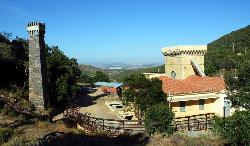Skip navigation bar and go to contents
Vivere la campagna
 Agricoltura
Agricoltura
 Ambiente
Ambiente
 Bilancio e Patrimonio
Bilancio e Patrimonio
 Consigliera di Parità
Consigliera di Parità
 Cultura
Cultura
 Formazione Professionale
Formazione Professionale
 Immigrazione/Emigrazione
Immigrazione/Emigrazione
 Innovazione Tecnologica
Innovazione Tecnologica
 Lavori pubblici e Viabilità
Lavori pubblici e Viabilità
 Lavoro
Lavoro
 Personale
Personale
 Pianificazione Territoriale
Pianificazione Territoriale
 Politiche giovanili
Politiche giovanili
 Politiche Sociali
Politiche Sociali
 Protezione civile
Protezione civile
 Pubblica Istruzione
Pubblica Istruzione
 Sport
Sport
 SUAP
SUAP
 Trasporti
Trasporti
 Turismo
Turismo
 URP
URP

Essentially, industrial archaeology in this territory refers to mining activities. Indeed, the territory of the Province of Middle Campidano has been included in the Geo-mining Park of Sardinia, comprising a number of interesting and pleasant mining sites. Many of them are strongly evocative and sought for by tourists, onlookers and enthusiasts. Either located in proximity of the sea, or sunk in woodlands vegetation, they are usually inserted in most valuable and fascinating environmental settings.
The mining world also left its widespread, deep-rooted signs throughout the territory, along with its remarkable heritage of collective memory and human history. As a result, social balances and economic/production cycles were conveyed into the industrial mining centres and, consequently, throughout their territory.
Significant investments supported by local authorities have allowed the implementation of safety measures in various sites, aiming at their recuperation. Once marked by hard work and fatigue, those sites have been turned into coveted tourist places, enhanced by memories and evidence of their own past.
The chief mining sites of the area can be found in Arbus and Guspini, yet there are other significant places in Gonnosfanadiga, Villacidro, San Gavino and Sardara.
 Arbus, mine and borough of Ingurtosu
Arbus, mine and borough of Ingurtosu Arbus, tuna-fishing factory of Flumentorgiu
Arbus, tuna-fishing factory of Flumentorgiu Gonnosfanadiga, mine of ‘Perda ‘e Pibera’
Gonnosfanadiga, mine of ‘Perda ‘e Pibera’ Guspini-Arbus, mine and hamlet of Montevecchio
Guspini-Arbus, mine and hamlet of Montevecchio San Gavino Monreale, the foundry
San Gavino Monreale, the foundry San Gavino Monreale, the railway station
San Gavino Monreale, the railway station Villacidro, mine of ‘Canale Serci’
Villacidro, mine of ‘Canale Serci’ Villacidro, the wash-house
Villacidro, the wash-house